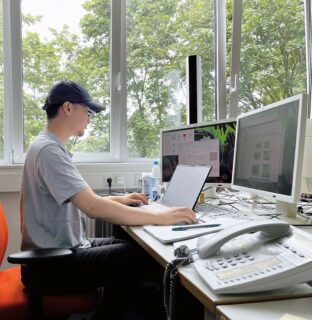Researcher Highlight – Xuejian Wang from Project K

We hope to give a better insight to the program by introducing our PhD students. We ask them about their research and how they became a member of our IRTG. This time we would like to introduce you to Xuejian who is working in our Project K – Multi-Scale Modeling of Electromechanical Coupling in Perovskite-Based Ferroelectric Materials and Composites:
Where do you come from, and how did you become a part of the IRTG program?
I am come from China. I noticed that the IRTG program in a casual web browsing. The title “Energy Conversion Systems” raised my huge interest. After two rounds of interviews with my supervisors, I was lucky to become part of this team.
Why did you decide to continue your research after your Master thesis?
I was major in Nuclear Science and Technology and my master thesis is “Design and Optimization of Radioisotope Thermoelectric Generator (RTG)”. During my master’s degree, I realized that material science is the the basis for designing application systems.
In addition, I am also eager to learn how the underlying principle of the materials affects their macroscopic performance. Obviously, IRTG program could satisfy my demands and curiosity.
Tell us a little bit about your current research for the IRTG.
Overall, I am working on the phase-field modeling of ferroelectric materials. Specifically, what I am doing now is try to realize the domain formation process by using COMSOL Multiphysics software. After that, I will add more complex initial conditions (defects, relaxor ferroeoectric, film/composites) and boundary conditions (electrical and mechanical) to my simulation model to make it closer to the real application systems.
What are you looking forward to most during your research stay in Japan?
The most important part of my work is how to determine material parameters, thereby the simulation could close to the actual situation. Our cooperation group in Japan have the ability to supply some wonderful ideas and assistance for me to complete my goal.
What is one goal in your life?
There is a Chinese poem: read thousands of books, travel thousands of miles. I hope I can do it.
